Ever been captivated by the enigmatic charm of an ancient fortress? Castrum Liube in Ljubac, Zadar, is that place, where centuries-old stones whisper tales of the past.
Castrum Liube, also known as Ljubački Stari Grad, is a medieval fortress located in Ljubac, near Zadar, Croatia. Built upon the remains of a Liburnian hillfort, it served as a strategic stronghold during the Middle Ages.
But this isn’t your average castle visit. This is a journey back in time, a chance to connect with a history that’s as rich as it is intriguing. Ready to unlock the secrets of Castrum Liube? Let’s go!
What is Castrum Liube?

Perched atop a strategic hilltop near the Croatian city of Zadar lie the impressive ruins of Castrum Liube, a once-formidable medieval fortress steeped in rich history and tales of bygone eras.
Castrum Liube, also known as Ljubac, is a fascinating archaeological site that offers visitors a glimpse into the enthralling past of this region.
The fortress dates back to the Middle Ages, when it served as a vital stronghold for various ruling powers. Its strategic location, overlooking the surrounding landscapes, made it an ideal spot for defense and surveillance.
Over the centuries, Castrum Liube witnessed the rise and fall of empires, playing a significant role in the historical events that shaped the area.
Today, the ruins of Castrum Liube stand as a monument to the ingenuity and resilience of the people who once called it home.
Visitors can wander through the remnants of the fortress walls, towers, and other structures, imagining the bustling life that once thrived within its confines.
The site also offers breathtaking views of the Adriatic Sea and the lush countryside, making it a popular destination for history buffs and nature lovers alike.
To truly appreciate the significance of Castrum Liube, it is essential to understand its historical context. The fortress was linked to powerful orders and influential figures throughout its existence, each leaving their mark on its stones and stories.
As you wander through the ruins, you can almost hear the echoes of the past, whispering tales of bravery, intrigue, and the eternal struggle for power and survival.
How To Get There?

To experience the allure of Castrum Liube firsthand, visitors must make their way to this enchanting archaeological site. The ancient Roman fortress is located near the village of Ljubac, approximately 20 kilometers northeast of Zadar, Croatia.
For those driving from Zadar, take the D502 road towards Smilčić and then follow the signs for Ljubac. The journey takes around 30 minutes, and parking is available near the site.
If you’re relying on public transportation, catch a bus from Zadar’s main bus station to Smilčić.
From there, you’ll need to take a taxi or arrange a private transfer to Ljubac, as bus services to the village are limited. Once in Ljubac, Castrum Liube is just a short walk away.
For adventurous travelers, hiking to Castrum Liube is an option. The fortress is situated on a hilltop, and the trek from Ljubac takes about 20 minutes. Be prepared for some steep and uneven terrain, and make sure to wear sturdy shoes.
To help you find your way, the GPS coordinates for Castrum Liube are 44.2251° N, 15.5467° E. You can also find the location on Google Maps by searching for ‘Castrum Liube’ or ‘Ljubac, Zadar.”
When planning your visit, allocate ample time to discover the ruins and enjoy the stunning views of the surrounding landscape. It’s recommended to allocate at least an hour for your visit, not including travel time.
Keep in mind that the site is open-air, so be prepared for weather conditions and bring water, especially during the summer months.
Origins and Early History

Castrum Liube, an impressive archaeological site near the village of Ljubac in Croatia, traces its origins back to the early 13th century when it first emerged as a strategic stronghold.
The earliest known historical record mentioning Castrum Liube dates to 1205, at which time it was controlled by the Knights Templar, a powerful Catholic military order.
The Templars likely established Castrum Liube to serve as a fortified outpost along important trade and pilgrimage routes.
Its location on a hilltop overlooking the surrounding landscape provided a defensible position and a vantage point for monitoring the area.
In those early days, the inhabitants of the castle would have been primarily Templar knights and supporting staff focused on military and religious duties.
After the suppression of the Templars in the early 14th century, control of Castrum Liube passed to another prominent Catholic military order, the Knights Hospitaller, also known as the Knights of St. John.
Under Hospitaller rule, the castle continued to play a significant role in the region’s defense and administration.
The political landscape of medieval Croatia was complex, with shifting alliances and conflicts among noble families, the Catholic Church, and foreign powers.
Castrum Liube’s strategic importance made it a valuable prize and a focal point for many of these struggles.
In the face of the challenges, the castle endured, bearing witness to centuries of Croatian history.
Today, its impressive ruins stand as a monument to the skill and determination of its early inhabitants and the pivotal role it played in shaping the region’s past.
Role During The Medieval Period
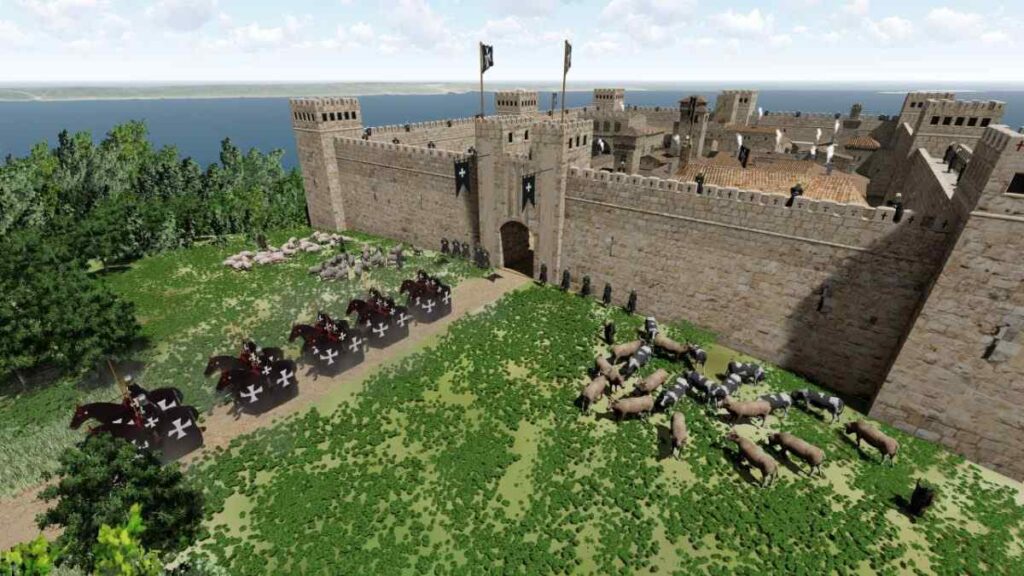
Throughout the medieval period, Castrum Liube stood as a powerful stronghold, playing a pivotal role in the defense and control of the surrounding region.
Its strategic location made it a key point for safeguarding maritime routes, particularly from the 13th to the 17th centuries when the fortress faced numerous invasions.
As a military stronghold, Castrum Liube served as a base for troops and a refuge for the local population during times of conflict.
The fortress’s walls and towers provided a robust defense against enemy attacks. Politically, the fortress was a symbol of power and control, with various rulers seeking to maintain their influence over the region by holding Castrum Liube.
The fortress also played a significant economic role, as it controlled access to important trade routes and served as a center for the exchange of goods. Merchants and travelers often sought shelter within its walls, contributing to the local economy.
Throughout the medieval period, life within Castrum Liube was characterized by a mix of military preparedness and daily routines. Soldiers trained and stood guard, while the inhabitants engaged in various crafts and trades to support the fortress’s needs.
Notable events, such as the Ottoman siege in the 16th century, tested the fortress’s defenses and the resilience of its occupants.
Despite the challenges, Castrum Liube remained a stalwart stronghold, adapting to the changing political and military landscape of the medieval period. Its legacy as a guardian of the region continues to captivate visitors and researchers alike.
Influence of the Templars and Hospitallers

During the medieval period, two influential military religious orders, the Knights Templar and the Knights Hospitaller, played a significant role in shaping the history and architecture of Castrum Liube.
These orders, founded in the 12th century to protect pilgrims and defend Christian territories, established a presence in the region around Castrum Liube.
The Knights Templar, known for their distinctive white mantles with red crosses, were skilled warriors and builders. They likely contributed to the fortification of Castrum Liube, enhancing its defensive capabilities to protect the surrounding area.
The Templars may have also used the fortress as a base for their military operations and as a stopover for pilgrims traveling to the Holy Land.
Similarly, the Knights Hospitaller, recognized by their black robes with white crosses, were dedicated to providing medical care and shelter for pilgrims.
They too played a part in the development of Castrum Liube, possibly establishing a hospital or a hospice within the fortress walls to serve the local population and travelers.
Both orders collaborated with local rulers to maintain stability in the region, although conflicts may have arisen on occasion as a result of competing interests.
The Templars and Hospitallers left their mark on Castrum Liube through their architectural contributions, such as fortified walls, towers, and buildings designed to accommodate their religious and military duties.
Their presence at the fortress highlights the strategic importance of Castrum Liube during the medieval period and the complex interplay of religious, military, and political forces that shaped its history.
Decline and Eventual Abandonment
The once-mighty fortress of Castrum Liube, a symbol of medieval power and resilience, fell into a gradual decline as the centuries passed, its walls slowly crumbling under the weight of time and neglect.
By the 17th century, the fortress had lost its strategic importance following shifting political alliances and advancements in military technology.
This loss of relevance led to reduced funding for maintenance and garrison support, setting the stage for Castrum Liube’s eventual abandonment.
A significant turning point in the fortress’s decline came when the Venetian governor Foscolo ordered its dismantling. This decision was made to prevent the Ottoman Empire from taking control of the fortress and using it as a base for further conquests.
The dismantling process marked the beginning of the end for Castrum Liube, as its defensive capabilities were systematically stripped away.
As the fortress fell into disrepair, its inhabitants began to leave, seeking better opportunities elsewhere. Over time, the once-thriving community within the fortress walls dwindled, leaving behind a shadow of its former self.
Today, the ruins of Castrum Liube stand as a monument to its rich history and the inevitability of change.
Visitors can wander through the remnants of this once-great fortress, imagining the lives of those who called it home and the events that shaped its rise and fall.
While the fortress may no longer serve its original purpose, it remains an essential part of the region’s cultural heritage, offering a glimpse into a fascinating chapter of medieval history.
Archaeological Discoveries at Castrum Liube
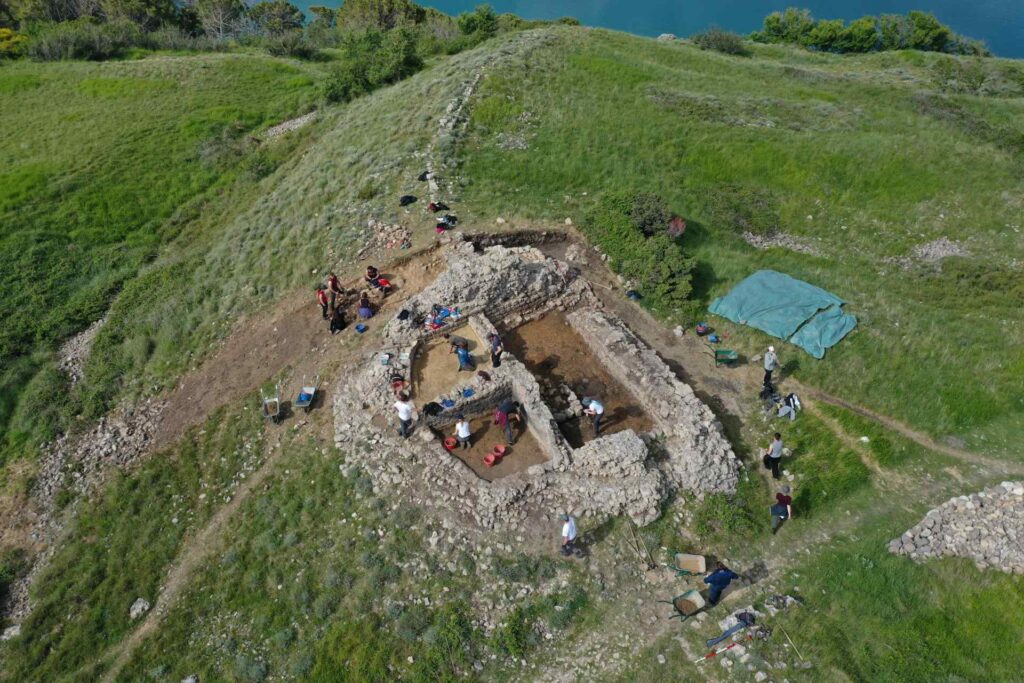
Archaeologists have made significant findings at Castrum Liube, illuminating the fortress’s rich history and the lives of its former inhabitants.
Excavations conducted by the Archaeological Museum Zadar over several decades have brought to light a wealth of artifacts and structural remains.
Some of the most notable revelations include well-preserved foundations of the fortress walls, towers, and internal buildings.
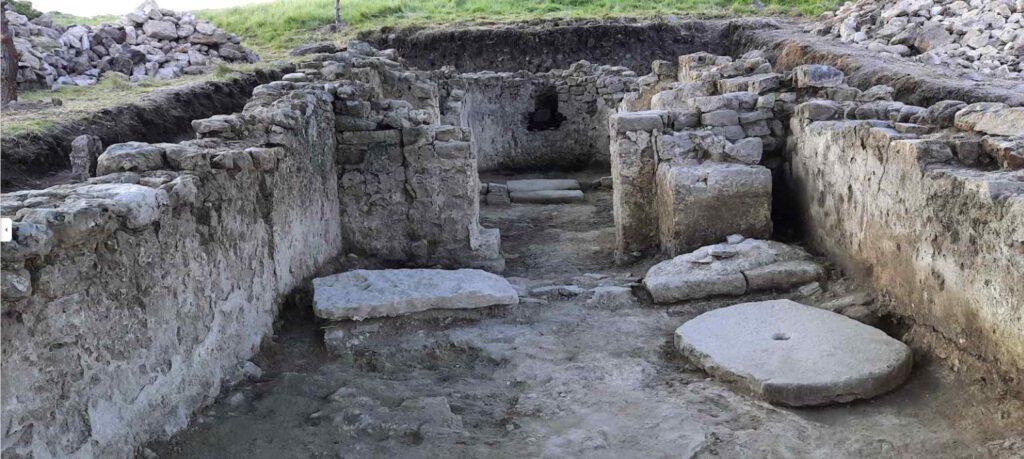
These provide valuable insights into the layout and construction techniques used during the Byzantine and later periods.
Archaeologists have also found numerous fragments of pottery, glassware, tools, weapons, and coins dating from the 6th to 15th centuries AD.
These artifacts offer a glimpse into the daily lives, trade connections, and military activities at Castrum Liube over the centuries.
One particularly significant find was a hoard of 14th-century silver coins, likely hidden during a time of danger.
This discovery helps pinpoint key events in the fortress’s history.
Other important artifacts include Byzantine belt buckles, jewelry, and religious items, attesting to the site’s role in the broader region.
The archaeological projects at Castrum Liube have greatly enhanced our understanding of this strategic fortress.
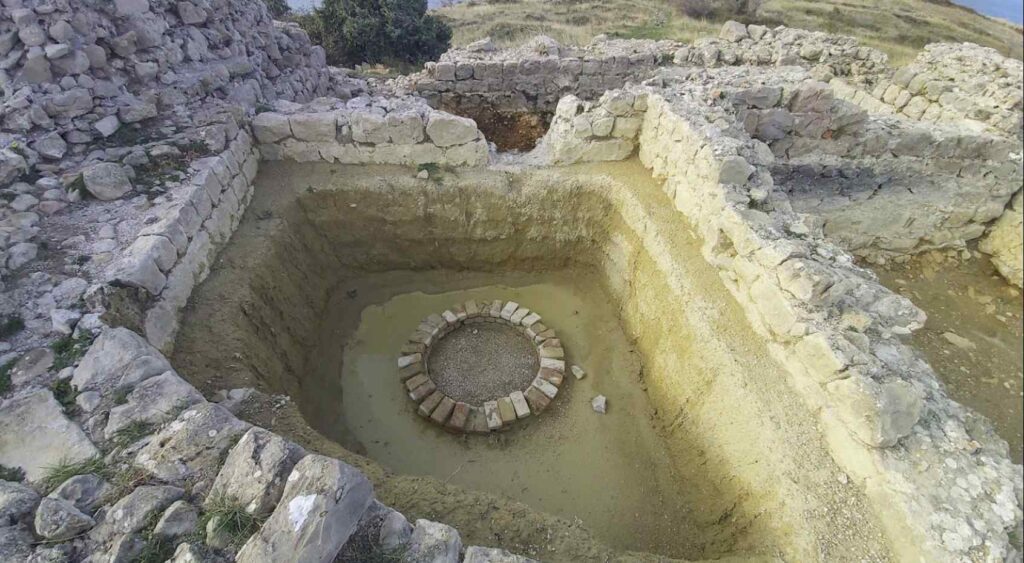
By piecing together the physical remains and artifacts, researchers have been able to reconstruct the site’s development, its importance in the defense of the Zadar area, and the cultural influences that shaped it.
As work continues, each new find adds another piece to the puzzle, bringing the fascinating story of Castrum Liube into ever-sharper focus.
These archaeological treasures are not just relics of the past, but essential keys to deciphering its secrets.
Local Legends and Myths Associated with Castrum Liube
Castrum Liube, an ancient fortress in Zadar, Croatia, is steeped in fascinating local legends and myths.
One such tale involves the fabled Templar Treasure, believed to be hidden within the castle’s walls.
Another legend speaks of the Ghost of the Lady in White, who is said to haunt the castle’s corridors,
while the story of the Cursed Bell of St. Marcellus adds an eerie twist to the fortress’s rich history.
1. The Templar Treasure

Shrouded in mystery, local legends speak of a colossal treasure hidden within the ruins of Castrum Liube by the Knights Templar, who once controlled the fortress.
According to these tales, the Templars amassed a massive collection of gold, precious gems, and sacred relics, which they concealed somewhere inside the castle walls before their fall from power.
Numerous attempts over the centuries have been made to locate this legendary treasure trove, but none have succeeded in tracking it down.
The allure of the hidden wealth continues to draw adventurers and curious visitors to the ruins, each hoping to be the one to crack the Templars’ secrets.
Some believe that clues to the treasure’s location may be found in the ancient symbols and inscriptions carved into the stone walls of the fortress.
Others speculate that the treasure might be protected by ingenious traps and puzzles, designed to thwart all but the most persistent and clever seekers.
While the existence of the treasure remains unproven, the legend adds an extra layer of intrigue to the already fascinating history of Castrum Liube, inviting visitors to let their imaginations run wild as they wander through the atmospheric ruins.
2. The Ghost of the Lady in White

Amongst the crumbling ruins of Castrum Liube, whispers of a ghostly presence have captivated the imagination of locals and visitors alike.
According to local legend, the apparition of a lady in white has been spotted wandering the ancient fortress grounds.
This ghostly figure is believed to be the spirit of a noblewoman who once resided in Castrum Liube during its prime.
The story goes that she is searching for her lost lover, a valiant knight who never returned from battle. Witnesses claim to have encountered her ethereal presence near the old well and among the remnants of the ancient chapel.
The tale of the lady in white adds an air of mystery and intrigue to the already fascinating history of Castrum Liube.
While the validity of these ghostly sightings remains uncertain, the legend of the lady in white has become an integral part of the local folklore surrounding the fortress.
It serves as a reminder of the untold stories and hidden secrets that lie within the walls of this ancient stronghold, waiting to be unearthed by those who dare to venture its haunting beauty.
3. The Cursed Bell of St. Marcellus
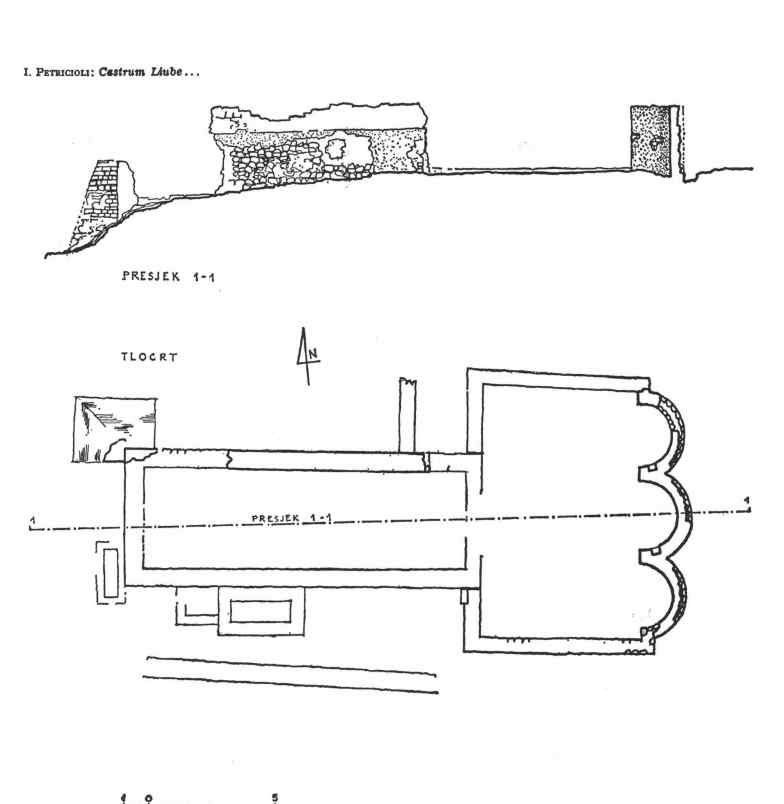
Nestled within the walls of Castrum Liube lies the church of St. Marcellus, harboring a dark legend that has haunted the fortress for centuries.
The tale revolves around a mysterious bell, said to bring misfortune to anyone who dared to ring it. According to the legend, a priest, overcome by anger, cursed the bell after it was used to signal a treacherous attack on the fortress.
From that moment on, those who rang the bell experienced a series of unfortunate events, ranging from bad luck to mysterious deaths.
As the stories of the cursed bell spread, fear gripped the hearts of the inhabitants of Castrum Liube.
To prevent further tragedies, the decision was made to remove the bell from the church and hide it away from prying eyes and curious hands.
The exact location of the bell remains a mystery to this day, but the legend of its curse continues to be whispered among the locals, serving as a reminder of the dark history that lies within the walls of the ancient fortress.
Why Visit Castrum Liube?

Perched atop a hill overlooking the Adriatic Sea, the ancient ruins of Castrum Liube beckon visitors to unravel its storied past and marvel at its breathtaking vistas.
This unique archaeological site offers a one-of-a-kind experience for history buffs and adventure seekers alike.
As you wander through the well-preserved remains of this Roman fortress, you’ll be transported back in time to an era of military might and strategic importance.
One of the most striking aspects of Castrum Liube is its commanding view of the surrounding landscape. From the top of the hill, you can gaze out over the sparkling waters of the Adriatic and the lush green hills of the Croatian countryside.
This panoramic perspective alone makes the trip worthwhile, providing a sense of awe and wonder that will stay with you long after you leave.
In addition to its natural beauty, Castrum Liube is also conveniently located near other popular attractions in the region.
Just a short drive away, you’ll find the charming town of Zadar, with its bustling markets, delicious restaurants, and fascinating museums.
Nature lovers will also appreciate the proximity to Paklenica National Park, where hiking trails wind through stunning gorges and past towering cliffs.






